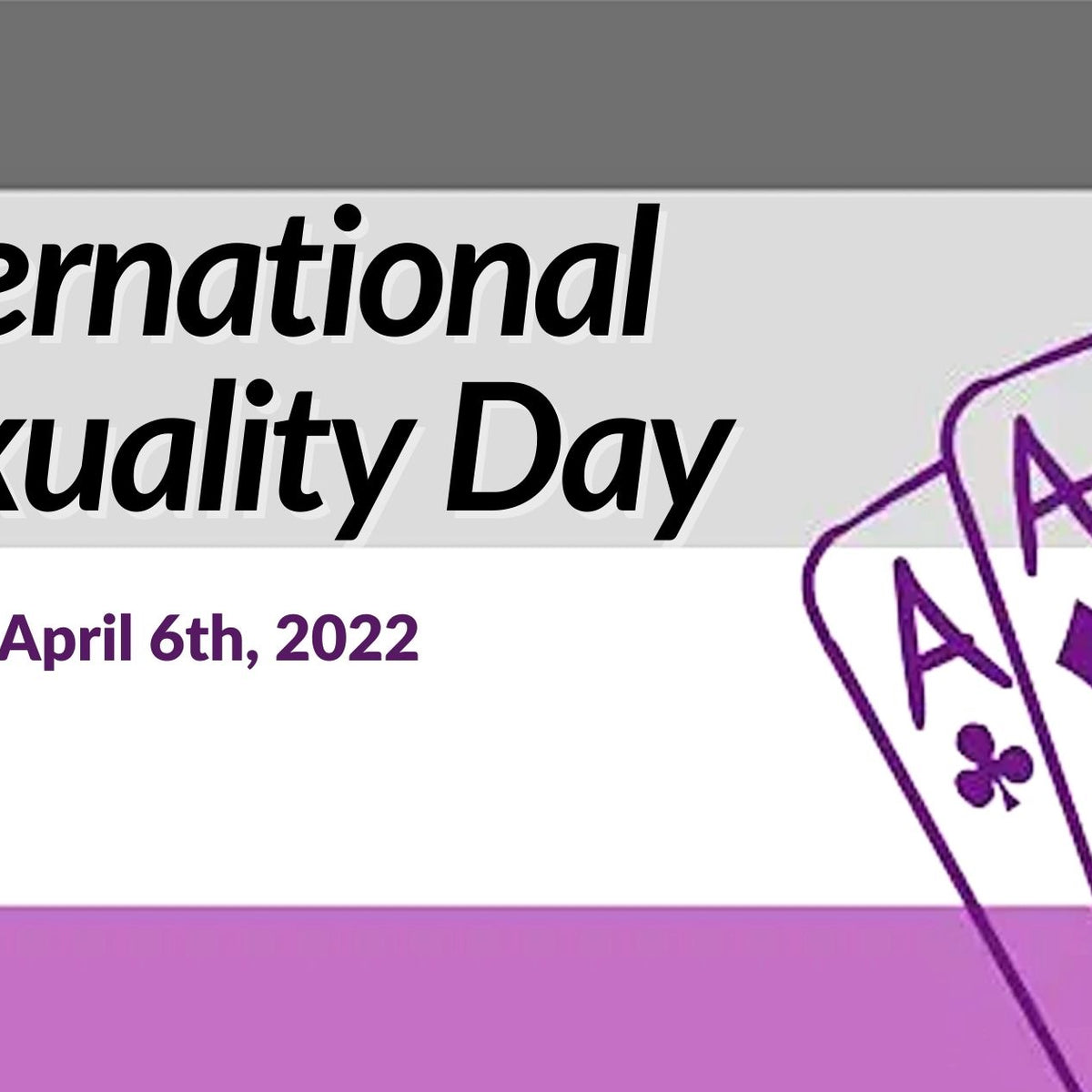International Asexuality Day: Celebrating Asexuality And Aromanticism

Table of Contents
What is Asexuality? Debunking Myths and Misconceptions
Asexuality is a sexual orientation characterized by a lack of sexual attraction to any gender. It's crucial to understand that asexuality is not a choice, a mental illness, or a phase; it's a valid and natural sexual orientation. The asexual spectrum encompasses a wide range of experiences, and not all asexual individuals identify identically. Let's explore some key aspects:
-
The Asexual Spectrum: This includes individuals who identify as:
- Gray-asexual (gray-a): Experiencing sexual attraction infrequently or under specific circumstances.
- Demisexual (demi): Only experiencing sexual attraction after forming a strong emotional connection with someone.
- Asexual (ace): Experiencing no sexual attraction.
-
Common Misconceptions: Many misunderstandings surround asexuality, including:
- Asexuality as a choice: Asexuality is an inherent aspect of identity, not a conscious decision.
- Asexuality as a medical condition: Asexuality is not a disorder or dysfunction. It's a normal variation of human sexuality.
- Asexual individuals are incapable of intimacy: Asexual individuals experience intimacy in various ways, such as emotional intimacy, intellectual intimacy, and platonic intimacy.
Understanding Aromanticism: Exploring the Spectrum of Romantic Orientations
Aromanticism, similar to asexuality, is a romantic orientation characterized by a lack of romantic attraction to any gender. It's distinct from asexuality, although the two often coexist. Aromantic individuals may still experience various forms of love and connection, such as platonic love or familial love, but they do not experience romantic attraction.
-
The Aromantic Spectrum: Just like asexuality, aromanticism also has a spectrum:
- Gray-romantic (gray-ro): Experiencing romantic attraction infrequently or under specific circumstances.
- Demiromantic (demi-ro): Only experiencing romantic attraction after forming a strong emotional connection with someone.
- Aromantic (aro): Experiencing no romantic attraction.
-
Distinguishing Asexuality and Aromanticism: It's important to understand that asexuality and aromanticism are independent orientations. One can be asexual but not aromantic, aromantic but not asexual, both, or neither.
-
Common Misconceptions: Many believe aromantic individuals are incapable of love or incapable of forming meaningful relationships. This is false. Aromantic individuals are capable of deep and lasting connections, though these connections might not be rooted in romantic attraction.
Celebrating International Asexuality Day: Events and Activities
International Asexuality Day offers a fantastic opportunity to celebrate ace and aro identities and build community. Here's how you can participate:
- Attend Events: Many organizations host online and in-person events, including workshops, meetups, and awareness campaigns. Search online for "International Asexuality Day events near me" or check LGBTQIA+ community websites.
- Educate Yourself: Explore books, articles, and websites dedicated to asexuality and aromanticism. Understanding these orientations requires ongoing learning and self-reflection. The AVEN (Asexual Visibility and Education Network) website is a valuable resource.
- Promote Allyship: Be an active ally by speaking out against discrimination, educating others about ace and aro identities, and celebrating inclusivity within the LGBTQIA+ community.
- Support Organizations: Consider donating to or volunteering with organizations advocating for asexual and aromantic rights and visibility.
The Importance of Visibility and Representation for Ace and Aro Individuals
The lack of visibility and representation for asexual and aromantic individuals has led to many challenges. Negative stereotypes, misunderstandings, and invisibility contribute to feelings of isolation and marginalization.
- The Need for Positive Representation: Accurate and positive representation in media, literature, and popular culture is essential for fostering understanding and acceptance. Seeing yourself reflected positively can make a significant difference in self-esteem and mental well-being.
- Mindful Language: Avoid using terms like "broken," "incomplete," or "choosing" when discussing asexuality or aromanticism. These perpetuate harmful stereotypes.
- The Impact of Visibility: Increased visibility and understanding can lead to improved mental health, stronger community bonds, and greater social acceptance for ace and aro individuals.
Conclusion: Continuing the Conversation on Asexuality and Aromanticism Beyond International Asexuality Day
International Asexuality Day is a vital day for raising awareness about asexuality and aromanticism, but the conversation shouldn't end there. Understanding and celebrating the diverse experiences within the ace and aro communities is a year-round commitment. We've explored the nuances of asexuality and aromanticism, debunked common myths, and highlighted the importance of visibility and representation. Let's continue to build a more inclusive and understanding world for all sexual and romantic orientations. Learn more about International Asexuality Day and the diverse experiences within the asexual and aromantic communities. Let's continue to celebrate asexuality and aromanticism every day! #InternationalAsexualityDay #Asexuality #Aromanticism #Ace #Aro #LGBTQIA+

Featured Posts
-
 Eurovision 2025 Will Jamala Participate
May 19, 2025
Eurovision 2025 Will Jamala Participate
May 19, 2025 -
 Wnba Debut A City Celebrates Paige Bueckers With A Special Day
May 19, 2025
Wnba Debut A City Celebrates Paige Bueckers With A Special Day
May 19, 2025 -
 You Tuber Jyoti Malhotra Arrest And Accusations Of Espionage For Pakistan
May 19, 2025
You Tuber Jyoti Malhotra Arrest And Accusations Of Espionage For Pakistan
May 19, 2025 -
 Tech Billionaire Battles French Woke Policies A Spreadsheet Showdown
May 19, 2025
Tech Billionaire Battles French Woke Policies A Spreadsheet Showdown
May 19, 2025 -
 Fatih Erbakan In Kibris Aciklamasi Sehitlerimiz Icin Kirmizi Cizgi
May 19, 2025
Fatih Erbakan In Kibris Aciklamasi Sehitlerimiz Icin Kirmizi Cizgi
May 19, 2025
